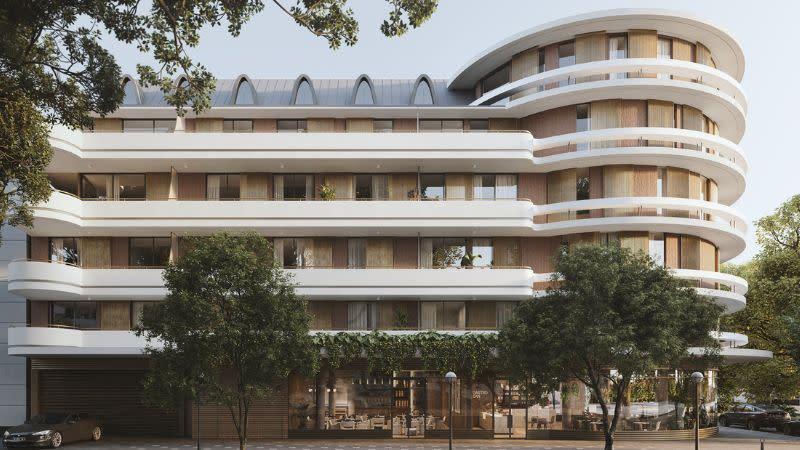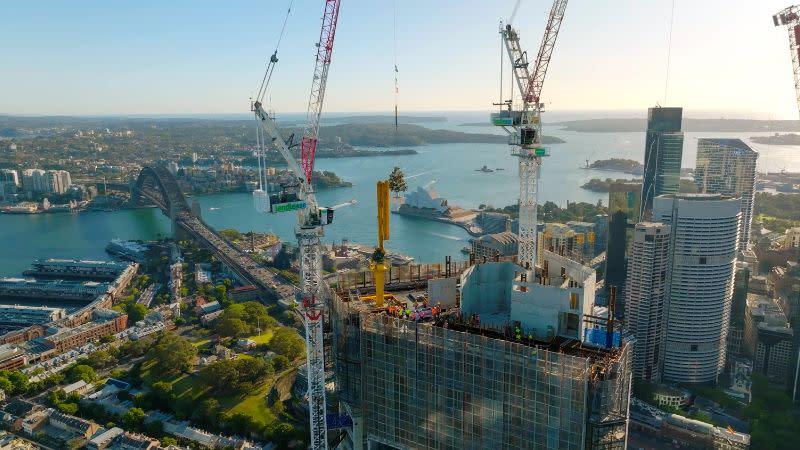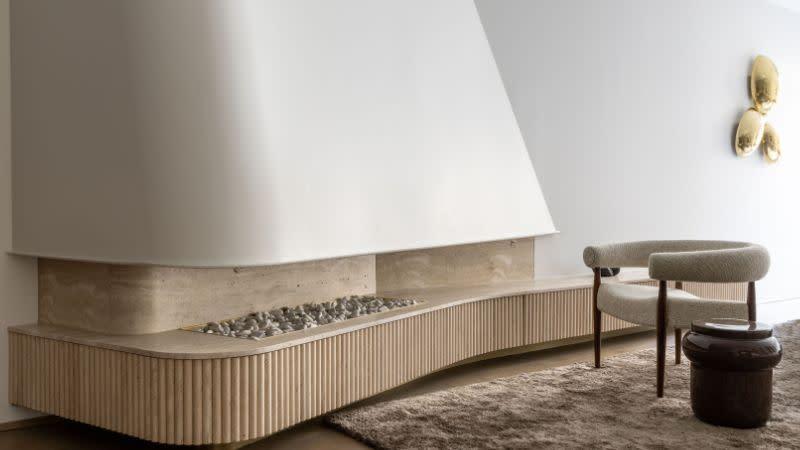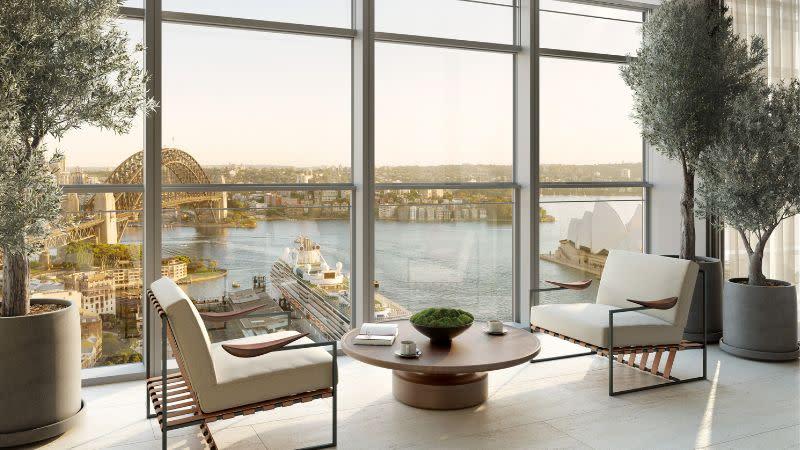Buying property has always been a solid option for high-net-worth individuals and even in the post-Covid landscape, the performance of Sydney’s luxury residential market has not slowed.
Earlier this month, Fortis made headlines with the sale of Ox House, a three-level Oxford Street home, which sold for a record price of $16.5 million.
Lendlease last week announced that its Mitsubishi Estate Asia’s luxury residential tower One Circular Quay surpassed $1-billion in presales after sales for its One Sydney Harbour exceeded $3.7 billion by the end of last year.
One Sydney Harbour also claimed the record for Australia’s most expensive residence with the $140-million sale of a three-storey penthouse.
But, says Lendlease head of apartments Daniel Dugina, there has been an evolution in what buyers are looking for.
“Traditionally, there’s been a preference for larger established homes but we’ve seen an increasing shift in the past few years towards prime high-rise luxury living, similar to major cities around the world such as London and New York”, he says.
“We’re also finding that buyers are more discerning, expecting more sophisticated finishes, an elevated level of service and private amenities, generous indoor and outdoor spaces in an iconic location, and also the confidence in a developer to be able to work with them to deliver on their expectations.”
Elsewhere, Top Spring Australia will complete Munro House in Elizabeth Bay in late 2023, while its Ode development at Double Bay, scheduled for completion in late 2025, has already broken price records for the suburb on three occasions.
And the high-end of the market seems certain to stay buoyant, according to Top Spring managing director Sydney Ma.
“In areas such as the eastern suburbs, the desire for high-quality properties with a truly unique lifestyle hasn’t wavered and Sydney remains one of the country’s strongest and most consistent performers,” he says.
“In the past six months we have seen suburb pricing records smashed, including our penthouse and sub-penthouse levels at Ode, which sold at an average off-the-plan price of $20 million.
“Munro House launched in the middle of the lockdown and we had a strong take-up rate by owner-occupiers who understood the value proposition of living in a high-quality development in a prime Elizabeth Bay address.”
Some things about the luxury sector are changing, however, including trends in secondary homes, according to Knight Frank Australia head of residential Erin van Tuil.
“Primary and secondary homes make up 36 per cent of Australian wealth portfolios—a lot of individual wealth is tied up in homes they live in and ultra-high net worth individuals own 2.9 homes on average.
“In terms of those secondary homes and lifestyle decisions, only 1 per cent of Australians invest their money overseas or invest in overseas residential compared to a global average of 13 per cent—Australians are still spending within Australia. It’s a long-term trend but certainly a continuing trend.
“We’re not seeing any shallowing of the pool of purchasers for luxury apartments.
“One in four ultra-high-net-worth individuals bought a home in 2022, and 16 per cent are buying a home in 2023 so there’s still huge demand for residential property, but there is a shortage of stock in the luxury market.”
Location is key
Like most sections of the residential market, supply has not been able to keep pace with demand.
“There is a shortage of stock in the market in general, and there is a shortage of super-prime luxury apartments. The term ‘luxury’ is used quite a bit but a product that ticks all the products for this demographic is quite rare,” van Tuil says.
This has translated into sales, according to Lendlease’s Daniel Dugina.
“We’ve consistently had strong interest in Sydney’s prime residential market—we’ve already sold more than 50 per cent of apartments in an off-market campaign at One Circular Quay, showing that interest and demand is strong.
“We expect this to continue at our One Sydney Harbour and One Circular Quay projects, which are once-in-a-generation opportunities that offer the exclusivity and rarity in landmark CBD locations that prestige buyers are looking for.”
This, combined with the seachange/treechange movement throughout Covid means that the super rich are looking ‘out of the box’ for luxury, and Top Spring is looking at other areas of Sydney to bring a differentiated offer to the high end of the market.
“We are bringing our luxury development experience to high-growth areas of the Lower North Shore,” says Ma.
“The Newlands in St Leonards is our $500-million masterplanned community now under construction, and its three-bedroom park-front terraces and apartments, priced from $2.42 million to more than $3 million, have been snapped up by buyers mostly already living in the Upper and Lower North Shore.
“In an area where glass towers dominate, The Newlands really is different, surrounded by parklands and close to the harbour.
“With a range of designs offered across five low-rise buildings, this inner-city tree-change attracts everyone from downsizers and families to professionals and first-home buyers.”
▲ One Sydney Harbour is more than 90 per cent sold across all three towers, including the sale of all townhouses and penthouses.
Ma notes a strong ongoing trends in Sydney luxury property, namely that Sydneysiders love Sydney, but also that there is a move towards a differentiated product for the high end of the market.
“At One Barangaroo Crown Residences, for example, more than 90 per cent of purchasers are Australia-based, mainly Sydney locals, and there are not many international buyers,” says Knight Frank’s van Tuil.
“Typically people buying in Sydney already have a real affinity to the city—there was a period where we had a lot of international investment, but with prime and super prime it’s very local.”
Top Spring and Lendlease have experienced similar trends.
“While there’s always been international interest in the luxury end of the market, what we’ve seen at One Sydney Harbour and One Circular Quay is more than 90 per cent of buyers are local, which tells us that Sydneysiders recognise what an incredible opportunity the developments present,” says Lendlease’s Dugina.
“At Ode and Munro House, our buyers have largely been residents of the Eastern Suburbs,” says Top Spring’s Ma.
“They are very active, they like to travel and many run successful businesses.
“With our developments, they don’t need to compromise on lifestyle yet have an opportunity to downsize from larger homes to a spacious residence like a 219sq m penthouse with three-bedrooms, media room, 111sq m rooftop terrace and views across the harbour.
“Many buyers often have holiday homes or secondary residences, so were looking for the convenience of living close to the city in a village atmosphere with the duality of beach-side living whenever they wanted.”
▲ The interiors of the six-storey Ode development in Double Bay were designed by Alwill Interiors.
But Sydneysiders are not just sticking with Sydney for luxury.
“Interesting, on the back of Covid, what we’re seeing now is co-primaries. People made the decisions to buy and move out [of cities] but now people are maintaining a property in town and a secondary location, and splitting their time more equally between then,” van Tuil says.
“This is particularly the case with secondary properties in Northern NSW and the Gold Coast.”
Price still matters
One factor impacting co-primary living is price.
According to Knight Franks’ Wealth populations report, to be in the top 1 per cent of earners in Australia, an individual would need to have $5.5 million in individual net wealth—the third highest in the world after Switzerland ($6.6 million) and Monaco ($12.4 million)
Despite this wealth, ultra-high net-worth individuals like a bargain.
“What makes Australia interesting is that in terms of square meterage, for $US1 million, you get the most for your money on the Gold Coast, which makes places like that attractive for secondary homes,” van Tuil says.
“In Sydney, you get 44sq m of luxury internal space with $US1 million, on the Gold Coast, it’s 117sq m for $US1 million.
“As a result we’re seeing some migration from Melbourne and Sydney to the Gold Coast and Northern New South Wales.”
▲ One Circular Quay is a 58-level tower designed by the late award-winning Australian architect Kerry Hill.
And while trends may come and go, Sydney’s luxury residential market looks more than likely to stay robust.
“We are confident in the high-end remaining strong. Sydney’s eastern suburbs are so tightly held and less cyclical in nature, and markets such as Double Bay and Elizabeth Bay tend to be less affected by economic factors such as interest rate rises,” says Ma.
“However, we are not complacent, and creating a point of difference is imperative in a tight market.
“We believe a well-defined development identity is a key enabler, so we undertake extensive research and work with expert consultants on every aspect, to ensure each project’s story is cohesive and compelling.”
You are currently experiencing The Urban Developer Plus (TUD+), our premium membership for property professionals. Click here to learn more.





